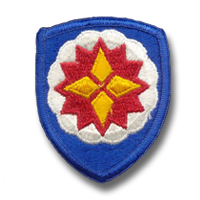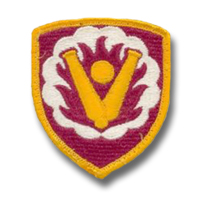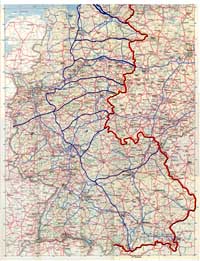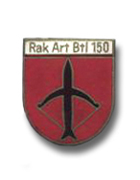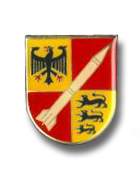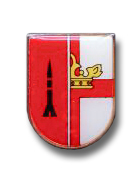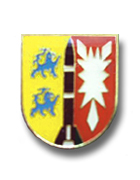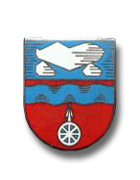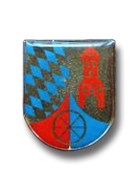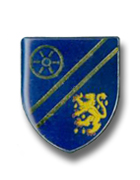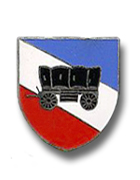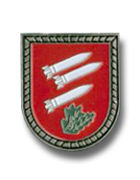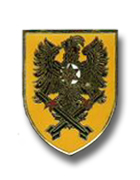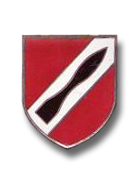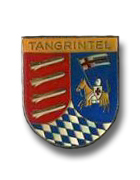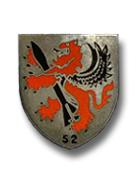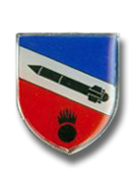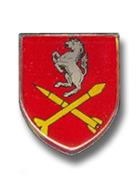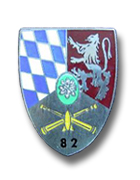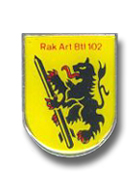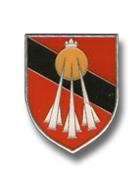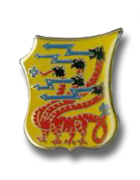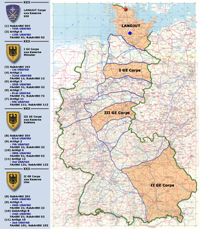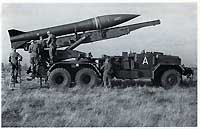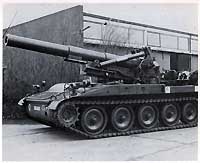| If you do NOT
see the Table of Contents frame to the left of this page, then Click here to open 'USArmyGermany' frameset |
|||||||||||||||||||||||||||||||||||
|
59th
Ordnance Brigade |
|||||||||||||||||||||||||||||||||||
|
|
|||||||||||||||||||||||||||||||||||
|
|||||||||||||||||||||||||||||||||||
|
|
|||||||||||||||||||||||||||||||||||
| Overview and Miscellaneous Information | |||||||||||||||||||||||||||||||||||
| (Sources: primarily from manuscripts provided by Jürgen Dreifke , Germany) | |||||||||||||||||||||||||||||||||||
Introduction to German Corps Artillery |
|||||||||||||||||||||||||||||||||||
| CORPS LEVEL SW UNITS - 1960s-80s | |||||||||||||||||||||||||||||||||||
|
|||||||||||||||||||||||||||||||||||
ABBREVIATIONS/TRANSLATIONS:
|
|||||||||||||||||||||||||||||||||||
EXAMPLE UNIT DESIGNATIONS: |
|||||||||||||||||||||||||||||||||||
| DIVISION LEVEL SW ROCKET UNITS - 1960s-80s | |||||||||||||||||||||||||||||||||||
|
|||||||||||||||||||||||||||||||||||
|
|||||||||||||||||||||||||||||||||||
| I (GE) Corps - Warhead Custodial Detachments & Supported Formations | |||||||||||||||||||||||||||||||||||
 I GE Corps
I GE Corps |
|||||||||||||||||||||||||||||||||||
|
|||||||||||||||||||||||||||||||||||
|
|
|||||||||||||||||||||||||||||||||||
| ORGANIZATION
(1959 - 1970): ORGANIZATION (1970 - 1979): ORGANIZATION (1980 - 1992): |
|||||||||||||||||||||||||||||||||||
|
|||||||||||||||||||||||||||||||||||
| Related Links: Atomwaffenlager in Niedersachsen Brocken Link - covers special weapons depots in the State (Land) of Niedersachsen - one of the very many pages of the excellent 'Relikte in Niedersachsen & Bremen' website. (German language only!) |
|||||||||||||||||||||||||||||||||||
|
|
|||||||||||||||||||||||||||||||||||
| Artilleriekommando 1 | |||||||||||||||||||||||||||||||||||
| Warhead Custodial Support: 1st US Army Missile Detachment (link) | |||||||||||||||||||||||||||||||||||
| (Source: Dein Standort Münster, Mönch Verlag, 1981) | |||||||||||||||||||||||||||||||||||
| In 1980, the 1st Artillery Command of I (GE) Corps consisted of the following units: | |||||||||||||||||||||||||||||||||||
|
|||||||||||||||||||||||||||||||||||
| Between 1963 and 1965, the Raketenartilleriebataillon 150 was located at Warendorf. (At this time the battalion was probably being equipped with the MGM-29 SERGEANT missile system which started to arrive in Europe between 1963-65. It is probable that the battalion was relocated once the transition to the SERGEANT was completed.) | |||||||||||||||||||||||||||||||||||
| (Source: Homepage of the Traditionsvereinigung of the 150th Rocket Artillery Battalion.) | |||||||||||||||||||||||||||||||||||
| The Formation
of the Raketenartilleriebataillon 150 The original NATO plans at the end of the 1950s envisioned equipping several German corps artillery units with the first operational guided missile system, MGM-5 CORPORAL, similar to the US and British units that had already been equipped with the CORPORAL. However, because development of the much more advanced replacement system, MGM-29 SERGEANT, was making good progress and would soon become operational, the decision was to wait and equip the German units with the SERGEANT when it became available. Between 1960 and 1962, a cadre of officers and enlisted men was formed for the three MAP [1] battalions, 150th, 250th and 350th, and underwent language and technical training at different military schools in Germany as well as at Fort Sill, Oklahoma. On October 25 1962, the cadre of the 150th Rocket Artillery Battalion left Germany to conduct final cadre training under US Army supervision at the US Army Artillery and Missile School, Fort Sill. The "Weapon System SERGEANT" courses were followed by unit training hosted by the 9th Artillery Group (US Army). In February 1963, the cadre - organized into two firing batteries - deployed to the Oro Grande Range (part of the Fort Bliss training area) where they conducted two missile launches on February 19, 1963. These constituted the first guided missile firings by German troops since the end of World War II. On March 4 1963, the cadre personnel returned to Germany, joining up with the 150th which was now stationed at Warendorf, Germany. On October 1 1961, the 150th Rocket Artilery Battalion was activated per Aufstellungsbefehl (similar to a general order?) #459A. Home station of the battalion was Eschweiler. As of January 1 1962, the Battalion comprised a headquarters and service battery (1st Battery) and a training battery. In September 1962, the battalion was moved to Warendorf, occupying temporary billets in a building that had served as a state school for fire fighters after the war. The battalion occupied a section of a large training complex used by German Olympic pentathlon and equestrian teams. The battalion was reorganized during this period, now comprising a Hqs & Svc battery and two firing batteries (2nd and 3rd Battery). The first two launchers arrived around April 1963. The 6th Battery (the security battery) was activated around the same time at Hildesheim. On April 1 1964, filler personnel were added to the cadre of the 4th Battery and it was brought up to full strength. The Battalion now consisted of Hqs & Svc Btry, three firing batteries (2nd, 3rd, 4th Btry) and a security battery (6th Btry). The problem was that the battalion was still spread out over three different garrisons. |
|||||||||||||||||||||||||||||||||||
|
|
|||||||||||||||||||||||||||||||||||
| (Source: Email from Ulrich Peschen, Oberfeldwebel (d.R.)) | |||||||||||||||||||||||||||||||||||
| From 1981 - 1993,
I served in the German Army. As a SFC (Oberfeldwebel), I served as a platoon
leader in the 6th Battery, 150th
Missile Artillery Batallion
(RakArtBtl 150) in Wesel. I was responsible for securing
with my soldiers and the comrades from 1st USAFAD the Special
Weapons Site Diersfordt.
When I found your page, I remembered these times and got a little homesick
and a slight touch of the "Bluea" came over me. Are any other veterans
out there, who remember the times like I do ... and served together in
our alliance at Diersfordt or Dülmen / Visbek? My best greetings to them
and thanks a lot for accomplishing the mission - preserving the peace
for my home country ... far away from their own homes! The 6th Battery was the security unit of the Missile battalion. By the way ... my father, Karl-Heinz Peschen, a retired Seargeant Major, was the first platoon leader who served as the German Site Security Force Commander in the SAS Diersfordt, and the funniest thing: I was the last one! My platoon had been on duty when after "the wall" came down. The political decision at the beginning of 1990 was for all the LANCE warheads to be taken out of the IGLOO Bunkers. And what about the interactions between U.S. Forces and us during my time of services? I grew up in a row of houses where german and american NCOs lived together with their families, so since that time we always used to have a close relationship. On Duty: We trained together, were tested together on NSI (later NWTI), field exercises, weapon and shooting training, a few of the members of 1st USAFAD allways joined us to take a chance for an achievement of the German "Schützenschnur". (I am also the proud owner of the rifle badge as a "Qualified Expert" on the M-16). Also, as the NCO responsible for sports and physical fitness we trained together to make sure, that our american comrades could achieve the "Sportabzeichen" from the "Deutscher Sportbund". During times of Duty on the site I initiated for the soldiers of my security platoon to get familiar with the U.S. Weaponry and equipment like the NBC Kit; First Aid Kit to ensure that in "the worst case" each of my men would be able to give professional help to a wounded or endangered american soldier. Also we offered special courses for them in using german standard infantry weaponry like MG 3 (machine Gun), G-3 Panzerfaust, Granatpistole 40mm and the newly developed night view target devices and googles. Private activities ... can't count the number of parties, barbecues and beer calls where we killed a few brain cells, mostly ending with a few good old very dirty songs, hehehehe... I remember one comrade in a very personal way. Sgt Cliff Walker and his family, who lived in my neighborhood. After the soldiers of the 1st USAFAD left the garrison SCHILL-KASERNE, their facility first became a shelter for asylum-seeking immigrants and later for persons immigrating to Germany from the former Soviet Union. It is kind of funny to think about! A few years before that, an unknown number of the current inhabitants of the kaserne were probably serving in the RED ARMY in areas that were target-points! Best whishes from a little place in the Ruhr Area |
|||||||||||||||||||||||||||||||||||
|
|
|||||||||||||||||||||||||||||||||||
| (Source: Bundeswehr in Dülmen, @ http://www.reservistenkameradschaft-duelmen.de/art-duelmen.html) | |||||||||||||||||||||||||||||||||||
| The Feldartilleriebataillon
110 Bei der Aufstellung der Bundeswehr hatten die Einsatzverbände der „ersten Linie“ und die sie unterstützenden Einheiten absolute Priorität. Zusätzliche Verstärkungskräfte der „Heeres-artillerie“, die in den Planungen der 50er Jahre auch vorgesehen waren, mussten mit ihrer Aufstellung warten. Angesichts der Mitte der 60er Jahre auftretenden wirtschaftlichen Probleme verlangsamte sich der weitere Aufbau der Bundeswehr nachdem der Rahmen von zwölf Divisionen seit 1963 in der Masse stand. Bei der Aufstellung der Korpsartillerie hatten aufgrund der damaligen Strategie die Einsatzbereitschaft der Raketenartilleriebataillone als mögliche Kernwaffenträger Vorrang. Dementsprechend wurde in diesem Bereich bis Mitte der 60er Jahren zuerst das Raketenartilleriebataillon 150 in Wesel aufgebaut. Die auf Korpsebene vorgesehene Verstärkungsartillerie konnte im I.Korps dagegen nicht im vorgesehenen Zeitplan entstehen. Im Jahre 1968 stellte das Korpsartilleriekommando 1 drei nicht aktive Bataillone (FArtBtl 120, FArtBtl 130, FArtBtl 140) auf, die dank des durch die Wehrpflicht mittlerweile beträchtlich gewachsenen Reservistenpotentials nach Alarmierung mobilisiert werden konnten. Es fehlte aber noch das aktive Feldartilleriebataillon als Kader für die Ausbildung und den Aufwuchs eines korpseigenen Rohrartillerieregimentes (ArtRgt 100 z.b.V.) mit drei Bataillonen. Hier bot sich erst 1970 durch Auflösung des Dülmener Raketenartilleriebataillons 72 und dessen Ersatz durch einen Lehrverband in Geilenkirchen die Möglichkeit, Personal und Mittel für die „Bemannung“ von freigewordenem Gerät freizusetzen und den Aufbau des Feldartilleriebataillons 110 zu beginnen. Zur Erstausstattung verwendete man die oben vorgestellte Feldhaubitze 105 (L), die durch M109 G in den Brigaden abgelöst worden waren. Als Zugfahrzeug diente der Munitionstransporter Faun 912-21, der vor der leichten Feldhaubitze etwas überdimensioniert wirkte. Die Version als Artilleriezugmaschine war mit einer Plane zum Schutz der mitfahrenden Geschützbedienung versehen. Durch die Ausstattung mit dem Kaliber 105 mm war das Bataillon für protokollarische Saluteinsätze prädestiniert. Von 1971 bis 1980 erschienen seine Batterien deshalb regelmäßig auf dem Flughafen Köln-Wahn . Die Aufstellung des Dülmener Feldartilleriebataillons 110 zog sich bis in das Jahr 1971 als der Verband endlich mit drei Feuerbatterien komplett war. Nur vier Jahre später musste das Bataillon seine 2. Batterie zur Aufstellung des Panzerartilleriebataillons 205 abgeben und seine Aktivstärke reduzieren. 1980 erfolgte ein weiterer Eingriff in die Substanz des Bataillons als die 1. Batterie zur Aufstellung des neuen Beobachtungsbataillons 73 ausgegliedert und die 3./110 in die neue 4. Batterie des Feldartilleriebataillons 71 umgewandelt wurde. In der Heeres-Struktur IV war das Feldartilleriebataillon 110 nur noch als teilaktiver Verband mit einer aktiven Batterie vorgesehen. Nur noch die 2./110, vormals 4./110, diente als aktives Kader für die beiden schwere Feldartilleriebataillone 110 und 120 des nicht aktiven ArtRgt 100 und hatte vor allem den Auftrag, diese Mob-Bataillone bei der Ausbildung ihrer Reservisten zu unterstützen. Allerdings erhielten die Dülmener Korpsartilleristen auch eine neue Geschützausstattung und man avancierte zum schweren Bataillon, als die M107 der Divisionen an die Korpsartillerie abgegeben und bald darauf auf M110 A2 Standard (s.o.) umgerüstet wurden. Einige M107 wurden erst später umgerohrt, um die noch vorhandene 175-mm-Munition für Ausbildungszwecke verschießen zu können. Erst 1985 wurde der letzte Schuss dieses Kalibers abgefeuert. Im März 1986 wurden das Feldartilleriebataillon 110 und das noch übriggebliebene nicht aktive FArtBtl 120 in Unna-Massen mit der Umsetzung der Artilleriestruktur 85 aufgelöst. Die freiwerdenden M 110 A2 wurden zur Aufstockung des Feldartilleriebataillons 71 in der 4. und 5. Batterie auf je 9 Geschütze genutzt. Die Tradition des Feldartilleriebataillons 110 wurde ebenfalls vom Feldartilleriebataillon 71 übernommen. |
|||||||||||||||||||||||||||||||||||
|
|
|||||||||||||||||||||||||||||||||||
| Related
Links: Traditionsvereinigung RakArtBtl 150 - veterans of the 150th German Rocket Artillery Battalion (SERGEANT/LANCE) |
|||||||||||||||||||||||||||||||||||
|
|
|||||||||||||||||||||||||||||||||||
| Artillerieregiment 1 (Panzerdivision 1) | |||||||||||||||||||||||||||||||||||
| Warhead Custodial Support: 32nd US Army Missile Detachment (link) | |||||||||||||||||||||||||||||||||||
 ArtRgt
1 ArtRgt
1 |
|||||||||||||||||||||||||||||||||||
| (Source: Achtung - ich zähle: 5-4-3-2-1-Feuer - Letztes Schießen für Raketenartilleriebataillon 12 @ http://uk-bmvg.de/berichte/) | |||||||||||||||||||||||||||||||||||
| Raketenartilleriebataillon
12 Hauptmann (Cpt.) Rieke assumed temporary command (and also served as the S-3) of the newly activated Heavy Artillery Battalion 140 on 19 March 1959. At that time, the battalion was located at Lager Donnerberg, near Eschweiler, home of the Rocket Artillery of the German Bundeswehr. In October 1964, Hvy Arty Bn 140 was redesignated as the Rocket Artillery Battalion 12 and placed under the command of the 1st Artillery Regiment. On Novemebr 7, 1991 the batteries of the battalion eauipped with the LARS (Leichtes Artillerie Raketen System) weapon system transitioned to the new MARS (Mittleres Artillerie Raketen System) system. |
|||||||||||||||||||||||||||||||||||
| In 1970 RakArtBtl 12 was located at Clausewitz-Kaserne, Langendamm b. Nienburg. | |||||||||||||||||||||||||||||||||||
| Related
Links: |
|||||||||||||||||||||||||||||||||||
|
|
|||||||||||||||||||||||||||||||||||
| Artillerieregiment 3 (Panzerdivision 3) | |||||||||||||||||||||||||||||||||||
| Warhead Custodial Support: 25th US Army Missile Detachment (link) | |||||||||||||||||||||||||||||||||||
| (Email from Manfred
Tegge, author/webmaster of Relikte.com) (Webmaster Note: The following article "auf Deutsch" contains a short history of the Begleitbatterie 3 in Doerverden. This German Bundeswehr unit was responsible, together with the 25th USAFAD, for providing secutiry at the SW Ammo site in Doerverden. I will provide a loose translation of the article sy domr point.) |
|||||||||||||||||||||||||||||||||||
|
Begleitbatterie
3 - Wechselvolle Geschichte einer Batterie |
|||||||||||||||||||||||||||||||||||
| Related Links: Traditionskreis Raketenartilleriebataillon 32/Begleitbatterie 3 |
|||||||||||||||||||||||||||||||||||
|
|
|||||||||||||||||||||||||||||||||||
| Artillerieregiment 7 (Panzerdivision 7) | |||||||||||||||||||||||||||||||||||
| Warhead Custodial Support: 81st US Army Missile Detachment (link) | |||||||||||||||||||||||||||||||||||
 ArtRgt
7 ArtRgt
7 |
|||||||||||||||||||||||||||||||||||
| (Source: 20 Jahre Artillerieregiment 7, Mönch Verlag, 1980)) | |||||||||||||||||||||||||||||||||||
| In 1980, the 7th Artillery Regiment of the 7th Panzerdivision consisted of the following units: | |||||||||||||||||||||||||||||||||||
|
|||||||||||||||||||||||||||||||||||
| The 7th
Artillery Regiment was formed on July 1, 1960 in Ahlen. In 1964, the subordinate units of Artillery Regiment 7, with a personnel strength of 2100 soldiers, are located in Handorf, Warendorf, Lippstadt and Ahlen. Plans call for the consolidation of all units in Dülmen by the end of 1965. On August 20 1966, Headquarters and Headquarters Battery, 7th Arty Regt was moved to the newly constructed St.-Barbara Kaserne in Dülmen. The 71st Field Artillery Battalion is the tube artillery unit of the regiment. The 4th Battery of the battalion was formed on July 1 1959 at Münster-Handorf. On November 16 1961, the battery was assigned to the 7th Arty Regt. On July 18 1962, the battery was moved to Lippstadt (with elements in Haltern?) where the other batteries of the battalion were organized. The 71st FA Bn was moved to Dülmen on August 22, 1966. At this time, the battalion was equipped with the M-107 175mm self propelled gun (2nd and 3rd Battery) and the M-110 8" (203mm) self propelled howitzer (4th Battery). The 2nd Battery of the 72nd Rocket Artillery Battalion was established on April 20, 1960 in Eschweiler. The other elements of the battalion were formed on January 2, 1965 in Münster-Handorf. On December 6 1966, the battalion was relocated to Dülmen where it joined the other units of the 7th Arty Regt. On January 16 1970, the battalion was reorganized, forming two new battalions: the 72nd Rocket Artillery Training Battalion (Raketenartillerielehrbattalion) which was moved to Geilenkirchen and the 110th FA Bn with home station at Dülmen. (The 110th would be assigned to the 1st Artillery Command of I Corps.) In the late 1970s, the 72nd was equipped with the MGR-1 Honest John 762mm rocket (2nd Btry) and the 110 SF Light Artillery Rocket System (3rd and 4th Btry). |
|||||||||||||||||||||||||||||||||||
|
|||||||||||||||||||||||||||||||||||
|
|
|||||||||||||||||||||||||||||||||||
|
|||||||||||||||||||||||||||||||||||
| The 72nd
Rocket Arty Bn and the 71st FA Bn
were supported by the 81st US Army Missile Detachment. The 81st U.S. Army Field Artillery Detachment was activated at Fort Sill, Okla. in February 1966 as the 81st U.S. Army Missile Detachment. The unit arrived in Germany in June 1966 and was attached to the 26th U.S. Army Missile Detachment of the 570th U.S. Army Artillery Group. In August 1966, the 81st moved to Duelmen, Germany. The detachment was reassigned to the 552nd U.S. Army Artillery Group in October 1978. The 81st inactivated in June 1992. |
|||||||||||||||||||||||||||||||||||
|
|
|||||||||||||||||||||||||||||||||||
| Artillerieregiment 11 (Panzergrenadierdivision 11) | |||||||||||||||||||||||||||||||||||
| Warhead Custodial Support: 5th US Army Missile Detachment (link) | |||||||||||||||||||||||||||||||||||
 ArtRgt
11 ArtRgt
11 |
|||||||||||||||||||||||||||||||||||
| (Source: 25 Jahre Artillerieregiment 11, Oldenburg (1985)) | |||||||||||||||||||||||||||||||||||
| In 1980, the 11th Artillery Regiment of the 11th Panzerjägerdivision consisted of the following units: | |||||||||||||||||||||||||||||||||||
|
|||||||||||||||||||||||||||||||||||
|
|||||||||||||||||||||||||||||||||||
|
|
|||||||||||||||||||||||||||||||||||
| (Email from Manfred Tegge, author/webmaster of Relikte.com) CORRECTIONS I just found your new pages about the 59th Ord Bde. Great job - I really like this growing mass of Information! Just a little mistake on your PAGE 3 - Details on German Army Nuclear Artillery Units: In 1980, the 11th Artillery Regiment was part of the of the 11th Panzergrenadierdivision (PzGrenDiv) not the 11th Panzerjägerdivision. UNIT HOME STATIONS: Stabsbatterie, Art Rgt 11 was at Oldenburg, not Dülmen Beobachtungsbatterie 11 was also at Oldenburg, not Dülmen Feldartilleriebataillon 111, again, Oldenburg, not Dülmen Raketenartilleriebataillon 112, did not serve as a training unit and was located at Delmenhorst, not Gelsenkirchen Your Locations are all right for the Art Rgt 7. |
|||||||||||||||||||||||||||||||||||
| (Email from Manfred
Tegge, author/webmaster of Relikte.com) (Webmaster Note: The following article in German contains a short history of the Raketenartilleriebataillon 112 in Delmenhorst. This outfit was supported by the 5th USAFAD in Duensen. I will provide a loose translation of the article in a week or so.) |
|||||||||||||||||||||||||||||||||||
| Raketenartilleriebataillon
112: Von "Honest John"-Raketen zu Mehrfachraketenwerfer Bataillonsgeschichte begann in Delmenhorst Die Geschichte des Raketenartilleriebataillons 112 begann im April 1960 in der Delmenhorster Caspari-Kaserne mit der Aufstellung einer selbständigen Batterie, ausgerüstet mit dem Feldraketenwerfer 762 Millimeter vom Typ "Honest John". Erst ein Jahr später sollte die offizielle Gründung des Raketenartillerie-Bataillons erfolgen, nachdem man in der damaligen Boelcke-Kaserne von Delmenhorst, der heutigen Feldwebel-Lilienthal-Kaserne, eine weitere "Honest John"-Batterie und in Dünsen eine Begleitbatterie aufstellte. Nach Integration der bereits bestehenden 2. Batterie im April 1961 in den Verband gab im November desselben Jahres die Übung FRIESENSTURM dem Bataillon Gelegenheit, auf dem Truppenübungsplatz Bergen die erste "Honest John"-Rakete abzuschießen. Seit Ende 1963 Standort in der Barbara-Kaserne Die 1962 erfolgte Aufstellung einer zweiten schießenden Batterie schloß sich an, so daß nunmehr mit einer Stabs- und Versorgungsbatterie, drei schießenden Batterien und einer Begleitbatterie die für lange Zeit vorherrschende Gliederung erreicht war. Besonders die 5. Begleitbatterie arbeitete mit dem 5th US Field Artillery Detachment, das seit Februar 1963 in Dünsen stationiert ist, eng zusammen. Seit Dezember 1963 ist das Raketenartilleriebataillon 112 endgültig in der Barbara-Kaserne in Adelheide stationiert. Sie wurde 1951 als "St.-Barbara-Barracks" vom 12. Königlichen Artillerieregiment bezogen, 1963 an die Bundeswehr übergeben und ab 1970 mit neuen Unterkünften ausgestattet. Mehrfachraketenwerfer als neuer Waffentyp Die Einführung des neuen Mehrfachraketenwerfers 110 Millimeter auf Selbstfahrlafette im Jahre 1971 machte eine erneute Umgliederung notwendig. Während die 2. Batterie zur "Großbatterie" mit vier Systemen "Honest John" umfunktioniert wurde, rüsteten die 3. und 4. Batterie um auf je acht Raketenwerfer von 110 Millimeter. Ausbildungskurse an den neuen Waffensystemen wie auch zahlreiche Vorführungs- und Belehrungsschießen schlossen sich an, um Erfahrungen zu sammeln. Zwei neue Batterien Von 1987 an Den Erfordernissen der Heeresstruktur 4 entsprechend, stellte die Auflösung der mit "Honest John"-Raketen ausgerüsteten 2. Batterie einen wichtigen Schritt im Rahmen einer weitergehenden Umgliederung des Bataillons dar, welches sich im Oktober 1980 in Form einer Stabs- und Versorgungsbatterie, einer 2. und 3. Batterie mit Mehrfachraketenwerfern sowie einer Begleitbatterie präsentieren konnte. Ab 1987 wird das Bataillon zusätzlich zwei MLRS-Batterien mit mittleren Raketenwerfern erhalten. Im Zuge der Umgliederung wird die Begleitbatterie selbständig. Einsätze bei Katastrophen Einsätze bei der Flutkatastrophe im Februar 1961 und der Schneekatastrophe 1979 forderten mehrfach die Leistungsbereitschaft der Raketenartilleristen in hohem Maße heraus. |
|||||||||||||||||||||||||||||||||||
|
|
|||||||||||||||||||||||||||||||||||
| Related
Links: 81st USAFAD, Dülmen - Homepage of the Dülmen Warthogs! Bundeswehr in Dülmen, 1966-2005 - German history of the Dülmen Garrison, includes lots of information on Artillerieregiment 7 |
|||||||||||||||||||||||||||||||||||
|
|
|||||||||||||||||||||||||||||||||||
| II (GE) Corps - Warhead Custodial Detachments & Supported Formations | |||||||||||||||||||||||||||||||||||
 II GE Corps
II GE Corps |
|||||||||||||||||||||||||||||||||||
|
|||||||||||||||||||||||||||||||||||
|
|
|||||||||||||||||||||||||||||||||||
| ORGANIZATION
(1959 - 1970): ORGANIZATION (1970 - 1979): ORGANIZATION (1980 - 1992): |
|||||||||||||||||||||||||||||||||||
|
|||||||||||||||||||||||||||||||||||
| Related Links: Chronik des Transportbataillons 220 - unit history of the special weapons transport battalion of II GE Corps. The battalion was stationed in the "Prinz-Eugen-Kaserne", Günzburg. |
|||||||||||||||||||||||||||||||||||
|
|
|||||||||||||||||||||||||||||||||||
| Artilleriekommando 2 | |||||||||||||||||||||||||||||||||||
| (Source: ) | |||||||||||||||||||||||||||||||||||
 ArtKdo 2
ArtKdo 2
In 1980, the 2nd Artillery Command of II (GE) Corps consisted of the following units: |
|||||||||||||||||||||||||||||||||||
|
|||||||||||||||||||||||||||||||||||
| (Source: Bundeswehrgelände Haid) | |||||||||||||||||||||||||||||||||||
| Raketenartilleriebataillon
250 In 1938, Großengstingen (Engstingen-Haid) was selected as an air munitions depot by the German Luftgaukommando Süd in Munich. The Munitionsanstalt Haid, also known as "Muna Haid", was a frequent target for allied bombings during the war years. Towards the end of the war in 1945 german military personnel destroyed the bunkers and ammo dumps. The barracks that were not destrpyed at the end of the war were used a displaced persons camp after the end of the war. In 1958, the first soldiers of the new Bundewehr moved into the new kaserne (later named Eberhard-Finckh-Kaserne). Initially a tabk outfit was located at the kaserne. In 1959, an airborne battalion, the Target Acquisition battalion 270 and two training units moved in. A big change occurred with the activation of the Technical Battalion (Special Weapons) 260 and the Rocket Artillery Battalion 250. These units were trained on the new Honest John rocket systems. The Tech Bnassumed reporsibility for providing maintenance and supply. während die Artilleristen sich für den Umgang mit der neuen Waffe vorwiegend in Amerika ausbilden lassen mußten. Eine praktische Erprobung der Waffe war in Deutschland nicht möglich. Dies geschah erstmals in White Sands, USA, danach auf den Hebriden und ab 1968 auf Kreta, wo die Engstinger Soldaten im Wettbewerb mit anderen Nato-Einheiten immer hervorragende Ergebnisse erzielen konnten. Kam ein Jägerausbildungszentrum der territorialen Steitfräfte hinzu Wurden 50 weitere Wohneinheiten fertiggestellt. Und seit dieser zeit war auch eine kleine amerikanische Einheit in Engstingen stationiert. Camp Golf, Trochtelfingen ( |
|||||||||||||||||||||||||||||||||||
|
|||||||||||||||||||||||||||||||||||
| The 250th
Rocket Arty Bn and the 210th FA Bn
were supported by the 84th US Army Missile Detachment. The 84th U.S. Army Artillery Detachment was organized and activated in December 1966 at Fort Sill, Okla. as the 84th U.S. Army Missile Detachment. The 84th moved to Germany in January 1967 and was assigned to the 512th U.S. Army Artillery Group. The unit was inactivated in May 1992. |
|||||||||||||||||||||||||||||||||||
| Related
Links: Bundeswehrgelände Haid - a project on the history of the Haid Kaserne was compiled by students of the Freibuehl School in Großengstingen. |
|||||||||||||||||||||||||||||||||||
|
|
|||||||||||||||||||||||||||||||||||
| Artillerieregiment 4 (4th Panzergrenadierdivision) | |||||||||||||||||||||||||||||||||||
| (Source: KFOR-SFOR-TFF VI. Einsatzkontingent 11/2002 - 5/2003) | |||||||||||||||||||||||||||||||||||
Artillerieregiment
4
NOTE: I will translate this soon. Please be patient. |
|||||||||||||||||||||||||||||||||||
| In 1959, Field Artillery Battalion 41 is located in the Schoch Kaserne, Landshut | |||||||||||||||||||||||||||||||||||
|
|||||||||||||||||||||||||||||||||||
| The 42nd
Rocket Arty Bn and the 41st FA Bn
were supported by the 36th US Army Missile Detachment. The 36th U.S. Army Field Artillery Detachment was organized and activated in October 1959 at Fort Sill, Okla. as the 36th U.S. Army Missile Detachment. Upon completion of training, the 36th Detachment moved to Germany in 1960. The unit was assigned to SASCOM upon its organization. The detachment was further assigned to the 548th U.S. Army Artillery Group and then to the 512th U.S. Army Artillery Group in July 1962. The unit was inactivated in May 1992. |
|||||||||||||||||||||||||||||||||||
| Related Links: |
|||||||||||||||||||||||||||||||||||
|
|
|||||||||||||||||||||||||||||||||||
| Artillerieregiment 8 (1st Gebirgsdivision) | |||||||||||||||||||||||||||||||||||
|
|
|||||||||||||||||||||||||||||||||||
|
|||||||||||||||||||||||||||||||||||
| The 82nd
Rocket Arty Bn and the 81st FA Bn
were supported by the 24th US Army Missile Detachment. The 24th USAFAD was located in Landsberg am Lech, Germany. It was a subordinate unit of the 512th U.S. Army Artillery Group, which was located in Günzburg, Germany. The detachment's MTOE had an authorized strenght of 80 soldiers, and was comprised mainly of 13B artillerymen and 12E atomic demolition specialists. The 24th U.S. Army Field Artillery Detachment was organized and activated in January 1961 as the 24th U.S. Army Missile Detachment at Fort Sill, Okla. Upon arrival in Europe in July 1961, the detachment was assigned to the 548th U.S. Army Artillery Group and then to the 512th U.S. Army Field Artillery Group in July 1962. The 24th USAFAD provided special weapons support to the 1st German Mountain Division and to II German Corps, with direct support provided to the 2nd Company/210th German Pioneer Battalion and the 8th German Mountain Artillery Regiment. The 24th USAFAD was located in Landsberg from approximately 1958 until deactivation in May 1992. Atomic Demolition Munition (ADM) platoon, 1980s. |
|||||||||||||||||||||||||||||||||||
| Related
Links: |
|||||||||||||||||||||||||||||||||||
|
|
|||||||||||||||||||||||||||||||||||
| Artillerieregiment 10 (10th Panzerdivision) | |||||||||||||||||||||||||||||||||||
| (Source: 20 Jahre 10. Panzerdivision und Panzerbrigade 29, 1959-1979, Mönch Verlag, 1979; Pfullendorfs Weg zur Garnison, article at Traditionsverband Artillerieregiment 10 - see link) | |||||||||||||||||||||||||||||||||||
| In 1979, the 10th Artillery Regiment of the 10th Panzerdivision consisted of the following units: | |||||||||||||||||||||||||||||||||||
|
|||||||||||||||||||||||||||||||||||
| The 10th
Artillery Regiment with its Headquarters and Headquarters Battery
(formed on 13 December) and the 102nd Rocket Artillery Battalion (formed
on 1 July) were formed in 1960 at Pfullendorf. The formation of the regiment's
101st FA Battalion had already begun on 1 May 1959, also at Pfullendorf. The Bundeswehr kaserne at Pfullendorf was originally designated "Neue Kaserne". On October 27 1964, the installation was renamed as General-von-Fritsch-Kaserne. The 102nd Rocket Artillery Battalion comprised three firing batteries with two MGR-1 Honest John launchers each. In the fall of 1969, the battalion was reorganized with (two) of the firing batteries re-equipped with the new 110 SF LARS weapons system. The 101st Field Artillery Battalion was the tube artillery unit of the regiment. The battalion moved into the newly constructed Neue Kaserne, Pfullendorf, in June 1959. The battalion consists of three firing batteries: 2nd and 3rd Btry equipped with the M44 155mm SP howitzers (6 each); 4th Btry is equipped with four 203mm towed howitzers . In 1964, the battalion was reorganized and transitioned to the M-107 175mm SP guns and the M-110 8" SP howitzers. |
|||||||||||||||||||||||||||||||||||
|
|
|||||||||||||||||||||||||||||||||||
|
|||||||||||||||||||||||||||||||||||
| The 102nd
Rocket Arty Bn and the 101st FA Bn
were supported by the 2nd US Army Missile Detachment. The 2nd U.S. Army Field Artillery Detachment was organized and activated at Fort Sill, Okla. in September 1962 as the 2nd U.S. Army Missile Detachment. In January 1963, the detachment moved to Germany and was assigned to the 512th U.S. Army Artillery Group. The detachment was inactivated in June 1991 |
|||||||||||||||||||||||||||||||||||
| Related
Links: Traditionsverband Artillerieregiment 10 - veterans of the 10th German Artillery Regiment |
|||||||||||||||||||||||||||||||||||
|
|
|||||||||||||||||||||||||||||||||||
| Related
Links: |
|||||||||||||||||||||||||||||||||||
